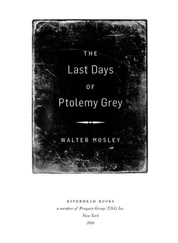Chalmers Johnson - Nemesis - The Last Days of the American Republic
Здесь есть возможность читать онлайн «Chalmers Johnson - Nemesis - The Last Days of the American Republic» весь текст электронной книги совершенно бесплатно (целиком полную версию без сокращений). В некоторых случаях можно слушать аудио, скачать через торрент в формате fb2 и присутствует краткое содержание. Год выпуска: 2006, ISBN: 2006, Издательство: Metropolitan Books, Жанр: Старинная литература, на английском языке. Описание произведения, (предисловие) а так же отзывы посетителей доступны на портале библиотеки ЛибКат.
- Название:Nemesis: The Last Days of the American Republic
- Автор:
- Издательство:Metropolitan Books
- Жанр:
- Год:2006
- ISBN:0805087281
- Рейтинг книги:5 / 5. Голосов: 1
-
Избранное:Добавить в избранное
- Отзывы:
-
Ваша оценка:
- 100
- 1
- 2
- 3
- 4
- 5
Nemesis: The Last Days of the American Republic: краткое содержание, описание и аннотация
Предлагаем к чтению аннотацию, описание, краткое содержание или предисловие (зависит от того, что написал сам автор книги «Nemesis: The Last Days of the American Republic»). Если вы не нашли необходимую информацию о книге — напишите в комментариях, мы постараемся отыскать её.
Nemesis: The Last Days of the American Republic — читать онлайн бесплатно полную книгу (весь текст) целиком
Ниже представлен текст книги, разбитый по страницам. Система сохранения места последней прочитанной страницы, позволяет с удобством читать онлайн бесплатно книгу «Nemesis: The Last Days of the American Republic», без необходимости каждый раз заново искать на чём Вы остановились. Поставьте закладку, и сможете в любой момент перейти на страницу, на которой закончили чтение.
Интервал:
Закладка:
58. Ciarrocca and Hartung, Axis of Influence, p. 33.
59. Quoted by Toby Eckert, Copley News Service, “Bribery Admission Spotlights Favoritism; ’Earmarking’ Has Grown in Congress,” San Diego Union-Tribune, December 3, 2005.
60. Hartung, Berrigan, Ciarrocca, and Wingo, “Tangled Web 2005”; John Isaacs, “An Indefensible Budget,” Bulletin of the Atomic Scientists 61, no. 3 (May/ June 2005), p. 22.
61. Theresa Hitchens, “Bad Time to Invest in U.S. Missile Defense Program” (speech, Royal United Services Institute’s International Missile Defense Conference, London, November 2-3,2005), Center for Defense Information, January 9, 2006; Hartung, Berrigan, Ciarrocca, and Wingo, “Tangled Web 2005”; Editorial, “Dream-Filled Missile Silos,” New York Times, April 1, 2004.
62. Richard F. Kaufman, “The Folly of Space Weapons,” TomPaine.com, June 15, 2005, http://www.tompaine.com/print/the_folly_of_space_weapons.php; Lawrence S. Wittner, “Bush’s Maginot Line in the Sky,” History News Network, May 10, 2004, http://hnn.us/articles/printfriendly/5026.html.
63. David Wood, Newhouse News Service, “Pentagon’s ’Black’ Budgets Ripe for Corruption,” San Diego Union-Tribune, December 2, 2005.
64. Ciarrocca and Hartung, Axis of Influence.
65. Bill Moyers, “Inside the Pentagon,” Now, transcript, Public Broadcasting Service, December 5, 2003, http://www.pbs.org/now/transcript/transcript245_full.html.
66. See Ken Silverstein, “Huntsville’s Missile Payload,” Mother Jones, July-August 2001.
67. Quoted by Mike Moore, “Space War—Now We’re Jammin!” Bulletin of the Atomic Scientists 61, no. 2 (March/April 2005), pp. 6-8; Donna Miles, “Iraq lamming Incident Underscores Lessons about Space,” American Forces Press Service, September 15, 2004, http://www.defenselink.mil/news/Sep2004/n09152004_2004091510.html.
68. George Smith, “Weapon of the Week: The Ruski Jammer,” Village Voice, January 22-28,2003.
69. Moore, “Space War.”
70. Federal Aviation Administration, “Satellite Navigation,” http://gps.faa.gov/GPSbasics/index.htm; Wikipedia, “Global Positioning System,” January 18, 2006, http://en.wikipedia.org/wiki/Gps.
71. David Whitman, “Keeping Our Bearings: The Coming War over the Global Positioning System,” US. News & World Report, October 21, 2002, pp. 72-73.
72. For further details and a survey of GPS, see Morag Chivers, “Differential GPS Explained,” ESRI, http://www.esri.com/news/arcuser/0103/differentiallof2.html.
73. “President Clinton: Improving the Civilian Global Positioning System (GPS),” May 1, 2000, http://clinton3.nara.gov/WH/EOP/OSTP/html/0053_4.html.
74. Jennifer Lee, “Europe Plans to Compete with U.S. Satellite Network,” New York Times, November 26, 2001; European Space Agency, “What Is Galileo?” March 17, 2005, http://www.esa.int/esaNA/GGGMX650NDC_index_2.html; Jonathan Amos, “Europe’s Galileo Project,” BBC News, December 28, 2005; Daniel Clery, “Find Yourself with Galileo: Europeans Will Not Have to Rely on the U.S. Military,” Financial Times, March 10, 2006.
75. Wikipedia, “Galileo Positioning System,” January 18, 2006, http://en.wikipedia.org/wiki/Galileo_positioning_system; George Parker and John Thornhill, “European Navigation Satellite a Challenge to the U.S.,” Financial Times, December 29, 2005.
76. Benjamin S. Lambeth, Mastering the High Ground: Next Steps in the Military Uses of Space (Santa Monica, CA: The RAND Corp., 2003), p. 103.
77. Katherine Shrader, “U.S. Has More Satellites in Orbit than Other Countries,” Associated Press, December 9, 2005.
78. Hitchens, “Weapons in Space”; Satellite Industry Association, “SIA Releases Satellite Industry Report,” press release, Long Beach, CA, June 6, 2005.
79. Philip E. Coyle and John B. Rhinelander, “Drawing the Line: The Path to Controlling Weapons in Space,” Disarmament Diplomacy, no. 66 (September 2002); Hitchens, “Weapons in Space.”
80. “The 1945 Proposal by Arthur C. Clarke for Geostationary Satellite Communications,” http://lakdiva.org/clarke/1945ww/.
81. Thomas Graham Jr., “Space Weapons and the Risk of Accidental Nuclear War,” Arms Control Today, December 2005, http://www.armscontrol.org/act/2005_12/Dec-spaceweapons.asp.
82. “Yugoslavia—Afghanistan—Iraq: The Satellite Wars,” Space Today Online, http://www.spacetoday.org/Satellites/YugoWarSats.html.
83. Jack Kelly, “U.S. the Leader in War.”
84. “Satellite’s Death Puts Millions Out of Touch,” USA Today, May 21, 1998; Caron Carlson, “What Went Wrong? High Costs Don’t Support Benefits,” Wireless Week, May 25, 1998, http://www.wirelessweek.com/article/CA4355.html?spacedesc=; Boeing Integrated Defense Systems, “Galaxy IV Specifications,” http://www.boeing.com/defense-space/space/bss/factsheets/601/galaxy_iv/galaxy_iv.html; Lambeth, Mastering the High Ground, p. 104. Environmental and weather satellites are threatened by a shortage of money as military demands crowd out civilian and scientific projects. See Matt Crenson, Associated Press, “Budgets Imperil Environmental Satellites,” ABC News, March 10, 2006, http://abcnews.go.com/US/print?id-1693735.
85. From Air Force Magazine, January 2005, quoted by Theresa Hitchens, “Worst-Case Mentality Clouds USAF Space Strategy,” Center for Defense Information, February 14, 2005, http://www.cdi.org/friendlyversion/printversion.cfm?documentID=2885.
86. Lambeth, Mastering the High Ground, p. 104.
87. Hitchens, “Worst-Case Mentality.” Members of the Council on Foreign Relations Study Group on Space Weapons write, “The quality of available information about what is going on in space—so-called space situational awareness—is currently one of the United States’ most urgent space security shortcomings.” International Security (Fall 2004), p. 56.
88. Gronlund, “Fire, Aim, Ready,” pp. 67-68.
89. Patrick Radden Keefe, “A Shortsighted Eye in the Sky,” New York Times, February 5, 2005; Jeffrey Richelson, “The Spy Satellite So Stealthy that the Senate Couldn’t Kill It,” National Security Archive, Washington, DC, December 14, 2004; Walter Pincus, “Spy Satellites Are Under Scrutiny,” Washington Post, August 16, 2005. The leading authority on codes, special access projects, and the black budget, William Arkin, notes that “Misty” is a very black code word indeed. All he can say about it is “Possible code word for possible stealth reconnaissance satellite.” See Code Names, p. 426.
90. Justin Ray, “Minotaur Rocket Launches U.S. Military Spacecraft,” Spaceflight Now, April 11, 2005, http://www.spaceflightnow.com/minotaur/xssl1/. Giuseppe Anzera comments, “XSS-11 is in fact specifically designed to disturb other states’ military reconnaissance or communications satellites.” See “The Pentagons Bid to Militarize Space,” Power and Interest News Report (PINR), August 17, 2005, http://www.pinr.com/report.php?ac=view_printable&report_id=347&language_id= 1.
91. Jeffrey Lewis, International Network of Engineers and Scientists Against Proliferation, “Space Weapons in U.S. Defense Planning,” Bulletin 23 (n.d., c. 2004), http://www.inesap.org/bulletin23/art03.htm.
92. Hitchens, “Worst-Case Mentality.”
93. According to Leonard David, some poor nations are talking about “debris-creating weapons.” See “The Clutter Above,” Bulletin of the Atomic Scientists 61, no. 4 (July-August 2005), pp. 32-37. On the effects of a nuclear explosion in space, see Department of Defense, Defense Threat Reduction Agency, High Altitude Nuclear Detonations Against Low Earth Orbit Satellites (Washington, DC: April 2001); Nick Schwellenbach, “EMPty Threat?” Bulletin of the Atomic Scientists 61, no. 55 (September/October 2005), pp. 50-57. Schwellenbach is writing about the electromagnetic pulse that is released by all nuclear explosions.
Читать дальшеИнтервал:
Закладка:
Похожие книги на «Nemesis: The Last Days of the American Republic»
Представляем Вашему вниманию похожие книги на «Nemesis: The Last Days of the American Republic» списком для выбора. Мы отобрали схожую по названию и смыслу литературу в надежде предоставить читателям больше вариантов отыскать новые, интересные, ещё непрочитанные произведения.
Обсуждение, отзывы о книге «Nemesis: The Last Days of the American Republic» и просто собственные мнения читателей. Оставьте ваши комментарии, напишите, что Вы думаете о произведении, его смысле или главных героях. Укажите что конкретно понравилось, а что нет, и почему Вы так считаете.











